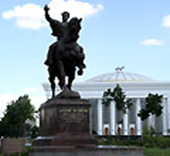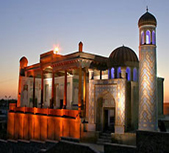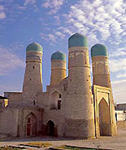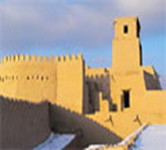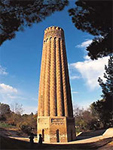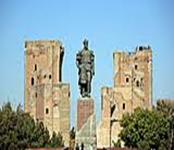|
Категории
|
Termez
It is through Termez in China and the Far East spread Buddhism and related architectural tradition. Convenient strategic and geographical location of Termez attracted the attention of the rulers of many states. Therefore, he was repeatedly subjected to attacks by various conquerors. Termez many times died and reborn again, like a phoenix from the ashes, restoring its former glory. According to legend, the founder of Termez is the first king of Bactria - Zoroaster. The ancient Persians, Achaemenids who conquered these places in the VI. BC, called the ancient city of Termez.
In 327 BC Alexander the Great conquered Termez, called it by its name - Alexandria. After Alexander the Macedonian founder of the Greco-Bactrian state Demetris styled city Demetrius. In I BC, in connection with the defeat of the Greco-Bactrian State by Kushan Empire, Termez, according to written sources, was named Ta-li-mi, and Chinese sources - Tu-mi (Tami). Termez has reached a high level of development mainly in the Kushan period (I c. BC - III century AD.). During this time, Termez became one of the major cities, with an area of 500 hectares. Through Termez India conducted trade with the West, North and East. During this period, in Termez and its suburbs were built many Buddhist temples and monasteries. V-VI centuries. BC Termez was ruled by the nomads - Ephtalites, then the Iranian Sassanid dynasty. In VII in Termez rules the local dynasty of Termezshahs.
In IX-XII centuries. Termez was in possession of the Turkic dynasty - Ghaznavids, Seljuks and Karakhanids, and in 1206 moved to the state of Khorezmshah Muhammad. In 1220, after a two-day siege Termez was taken and destroyed by the armies of Genghis Khan. In the second half of XIII century. Termez was again rebuilt and grew at a new location. With the transition to the state of Timurids city continued its rapid growth and was nicknamed "Shahri gulgula," that is "Bustling city".
In the second half of XVIII century in the south of Old Termez on the banks of the Surkhandarya river appeared Pattakesar village. And a hundred years later in his place again revived the present city of Termez. The emergence of a new Termez coincided with tensions between Russia and England. In order to strengthen its influence in these areas, Russia has taken a series of military campaigns in Central Asia. Termez is currently located in the Emirate of Bukhara.
After independence, the Republic of Uzbekistan restrictions were lifted, and the ancient city of Termez once again welcoming guests from around the world. The city is now being actively developed, built new hotels, office buildings and sports complexes, schools, roads restored. The Archaeological Museum is open to a rich collection of unique items. Fully landscaped area adjacent to the Mausoleum of Hakim al-Termizi, which is visited by thousands of pilgrims.
|
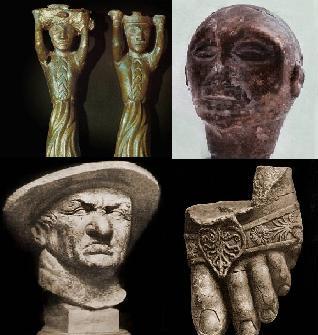 Termez
Termez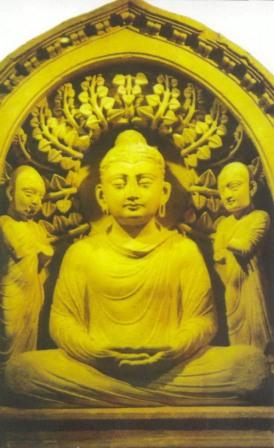 The earliest name of Termez, went down in history, was Taramastha or Taramata (which is translated from the Bactrian meant "river").
The earliest name of Termez, went down in history, was Taramastha or Taramata (which is translated from the Bactrian meant "river").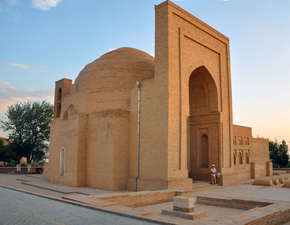 In 705 the city was captured by the Arabs. It starts with the spread of Islam, are being built the Muslim religious centers. In IX-XII centuries Termez as a large and populous city became the administrative, commercial, craft, scientific and educational center. During this time the length of the fortifications of the city was 10 miles. It had nine gates. He was a prosperous city, because there was a major river port of all the regions located in the upper reaches of the Amu Darya. About Termez was the narrowest crossing the Amu Darya. Port of Termez bring big profits because of a steady stream of travelers. At that time, in Termez worked famous writers, scientists and theologians. The most significant of which - Abu Abdallah Muhammad ibn Ali al-Hakim al-Termizi, founder of the dervish (monastic) order "Hakimi".
In 705 the city was captured by the Arabs. It starts with the spread of Islam, are being built the Muslim religious centers. In IX-XII centuries Termez as a large and populous city became the administrative, commercial, craft, scientific and educational center. During this time the length of the fortifications of the city was 10 miles. It had nine gates. He was a prosperous city, because there was a major river port of all the regions located in the upper reaches of the Amu Darya. About Termez was the narrowest crossing the Amu Darya. Port of Termez bring big profits because of a steady stream of travelers. At that time, in Termez worked famous writers, scientists and theologians. The most significant of which - Abu Abdallah Muhammad ibn Ali al-Hakim al-Termizi, founder of the dervish (monastic) order "Hakimi".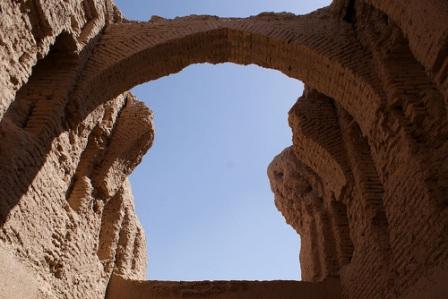 Termez continued to grow, and when passed into the possession of the Sheibanids state. Were carried out to restore the fortress of Old Termez, built chapels, mosques and minarets, science has developed. However, after the collapse of the Sheibanids State, civil strife, wars have taken place in the second half of XVIII century. The struggle for the throne between the various feudal lords turned into the ruins of Termez. Minarets, palaces and mosques were destroyed.
Termez continued to grow, and when passed into the possession of the Sheibanids state. Were carried out to restore the fortress of Old Termez, built chapels, mosques and minarets, science has developed. However, after the collapse of the Sheibanids State, civil strife, wars have taken place in the second half of XVIII century. The struggle for the throne between the various feudal lords turned into the ruins of Termez. Minarets, palaces and mosques were destroyed.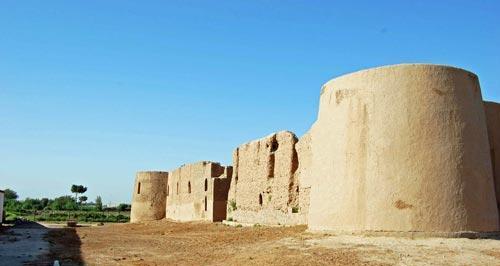 A peace agreement of September 28, 1873 transformed the Emirate of Bukhara in the country dependent on Russia, and the additional contract of 23 June 1888 resolved the problem of stay of the Russian troops in Termez and built here the defensive structures. On January 15, 1893 Termez was given the Emir of Bukhara the Russian government. In order to protect Russia's interests are accommodated a large number of military units. Carrying out electrical lines, communication, telegraph, the railroad contributed to the development of Termez and turned it into an important crossing point on the river Amu Darya.
A peace agreement of September 28, 1873 transformed the Emirate of Bukhara in the country dependent on Russia, and the additional contract of 23 June 1888 resolved the problem of stay of the Russian troops in Termez and built here the defensive structures. On January 15, 1893 Termez was given the Emir of Bukhara the Russian government. In order to protect Russia's interests are accommodated a large number of military units. Carrying out electrical lines, communication, telegraph, the railroad contributed to the development of Termez and turned it into an important crossing point on the river Amu Darya.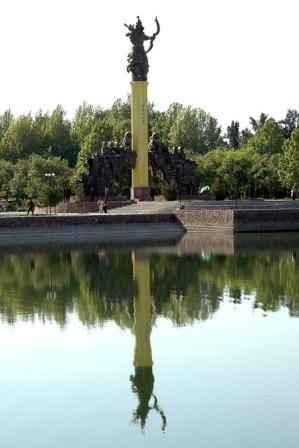 After the October Revolution of 1917 Termez has not lost its military and strategic importance. In the Soviet period Termez is a city with a very important military value. In and around the city has dozens of military units and facilities. The city was completely closed for a visit not only foreigners but locals from other regions.
After the October Revolution of 1917 Termez has not lost its military and strategic importance. In the Soviet period Termez is a city with a very important military value. In and around the city has dozens of military units and facilities. The city was completely closed for a visit not only foreigners but locals from other regions.